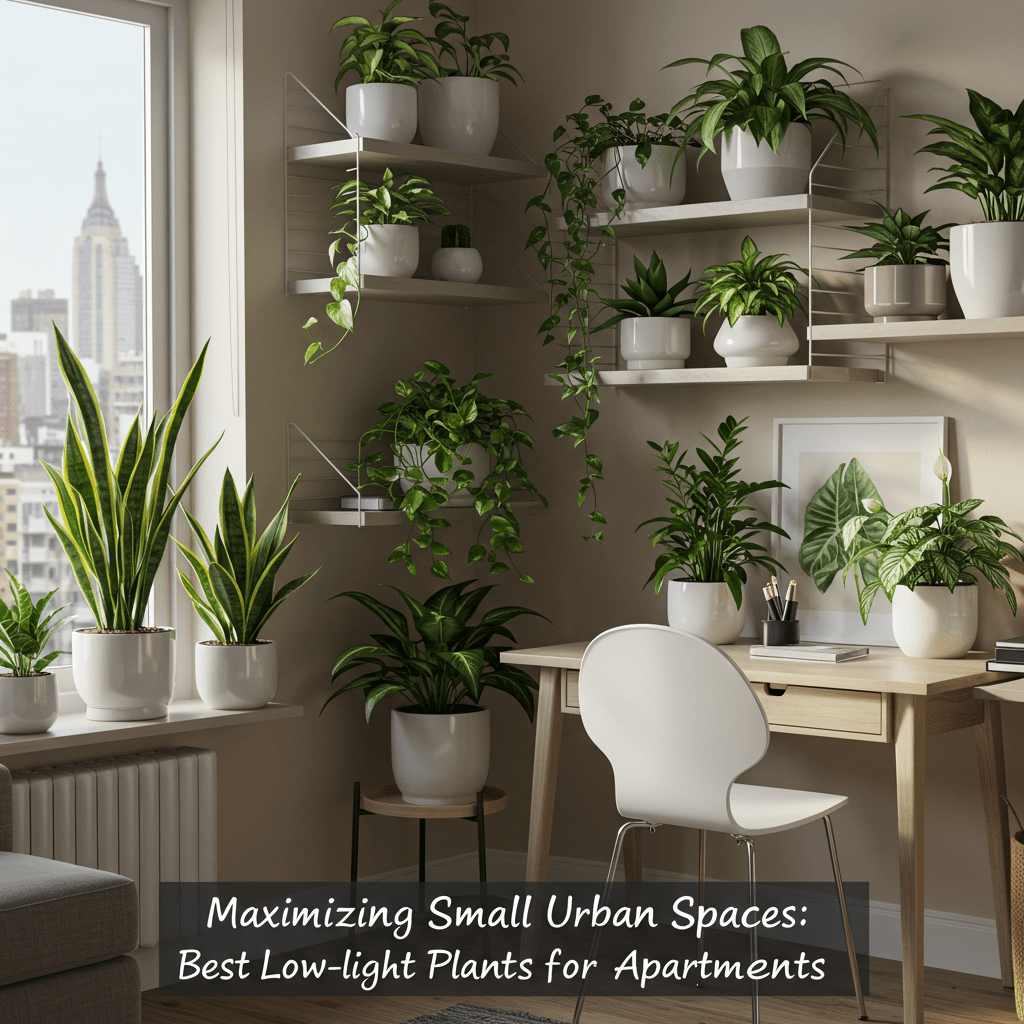Welcome to the world of indoor gardening! If you’re a new homeowner or renter with limited natural light, low-light plants are your perfect companions. They’re resilient, easy to care for, and thrive in spaces like dim corners, north-facing rooms, or apartments shaded by buildings. Plus, they purify air, reduce stress, and add life to your decor—no green thumb required!
Top 6 Low-Light Plants for Beginners
- Snake Plant (Sansevieria)
- Features: Tall, sword-like leaves with striking patterns.
- Care: Water sparingly (every 2–3 weeks); thrives in neglect.
- Bonus: Purifies air day and night.
- Pet Note: Toxic to cats/dogs.
- Pothos (Epipremnum aureum)
- Features: Trailing vines with heart-shaped leaves.
- Care: Water when soil dries out; grows quickly in indirect light.
- Bonus: Easy to propagate in water.
- Pet Note: Toxic if ingested.
- ZZ Plant (Zamioculcas zamiifolia)
- Features: Glossy, dark green leaves; ultra-hardy.
- Care: Water monthly; tolerates drought.
- Bonus: Thrives in fluorescent lighting.
- Pet Note: Mildly toxic.
- Peace Lily (Spathiphyllum)
- Features: Elegant white blooms; lush foliage.
- Care: Keep soil moist; enjoys humidity (great for bathrooms!).
- Bonus: Improves indoor air quality.
- Pet Note: Toxic to pets.
- Spider Plant (Chlorophytum comosum)
- Features: Arching leaves with baby “spiderettes.”
- Care: Water weekly; prefers indirect light.
- Bonus: Safe for pets and easy to share (propagate the babies!).
- Cast Iron Plant (Aspidistra elatior)
- Features: Deep green, leathery leaves.
- Care: Nearly indestructible; water every 2–3 weeks.
- Bonus: Tolerates temperature fluctuations.
Essential Care Tips
- Watering: Less is more! Overwatering kills more plants than neglect. Let soil dry out between waterings.
- Light: Place near north-facing windows or in rooms with artificial light. Avoid direct sun.
- Soil: Use well-draining potting mix. Add perlite for extra drainage.
- Feeding: Fertilize lightly (1–2 times/year) during growing season (spring/summer).
- Pots: Always use containers with drainage holes to prevent root rot.
Benefits of Low-Light Plants
- Air Purification: Remove toxins like formaldehyde and benzene.
- Mood Boosters: Reduce stress and increase productivity.
- Decor-Friendly: Add color and texture to shelves, desks, or dark corners.
Common Mistakes to Avoid
🚫 Overwatering: Yellow leaves = SOS! Stick your finger in the soil—if it’s damp, wait.
🚫 Ignoring Pests: Check for spider mites/mealybugs. Wipe leaves with soapy water.
🚫 Wrong Placement: Keep toxic plants out of reach of curious pets/kids.
Pro Tips
- Propagate: Share spider plant babies or pothos cuttings with friends!
- Rotate Plants: Give pots a quarter-turn weekly for even growth.
- Humidity Hack: Group plants together to create a mini-humid microclimate.
Conclusion
Start small—pick one or two plants from this list and watch your space transform. Remember, plants are forgiving teachers. Even if you make mistakes, they’ll bounce back. Happy planting! 🌿
Got a dark corner? Now you’ve got a plan(t)!



